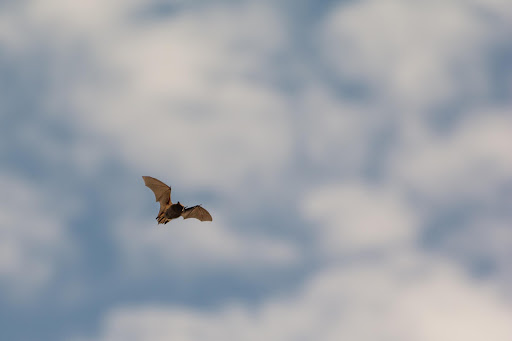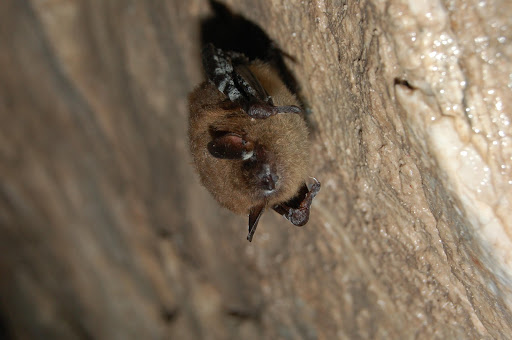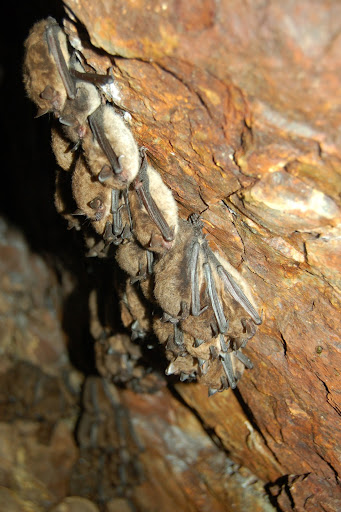Pseudogymnoascus destructans is a fungal pathogen that causes the disease known as White-Nose Syndrome. This disease is characterized by a white fungus that grows on a bat’s snout, wings, and ears. It grows well in cool and humid underground sites, such as caves and other bat hibernacula. Suffering from an increased rate of dehydration caused by the fungus, infected bats awaken more frequently to replenish water, but starve to death due to excessive activity. Symptoms include considerable body fat loss, winter or daytime flying, wing damage and scarring, and death.
This fungus attacks many bat species, including the Little Brown (Myotis lucifugus), the Northern Long-Eared (Myotis septentrionalis), and the Tricolored (Perimyotis subflavus) here in Nova Scotia. Because the fungus grows well in cold temperatures, overwintering bats in caves and other hibernacula are affected. During the winter of 2012–2013, White-Nose Syndrome caused a decline in bat populations of over 90% in Nova Scotia.
This syndrome was first detected in New York State in 2006, having possibly been transported from Europe. It then spread rapidly between bats and eventually between colonies.

White fungus on bat’s snout, wings, or ears; bats flying in winter or during the day.



Generally, a female bat has only one pup per year. Bats are insect eaters, making them a vital part of North American ecosystems.
If you are travelling far, try to keep your belongings free of spores and seeds by cleaning them thoroughly upon arrival. Avoid entering hibernacula (e.g. caves, abandoned mines), because your clothes, shoes, or person could spread the fungus. Avoid disturbing and handling bats. Immediately report any irregular bat behaviour, such as flying during the winter or daytime, or dying/dead bats. Upload your observation to iNaturalist and report it to the NSISC council.
Join our mailing list.